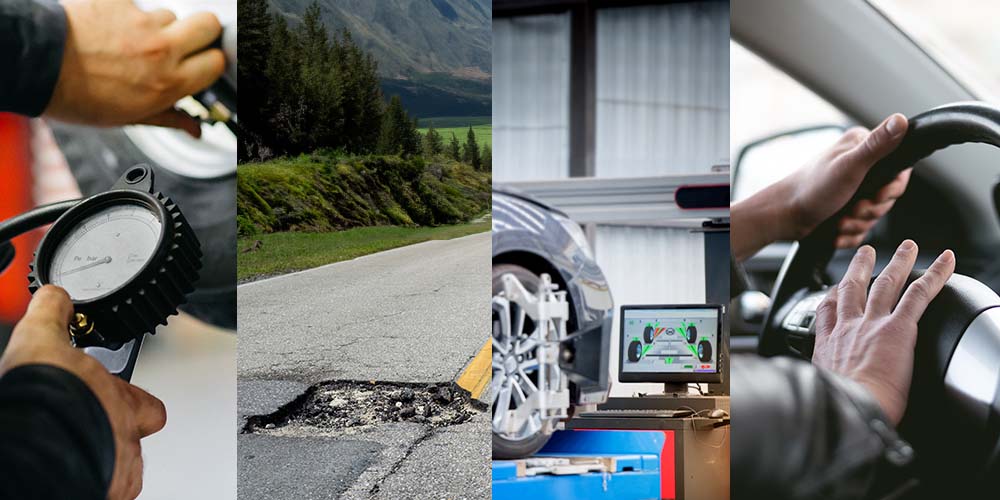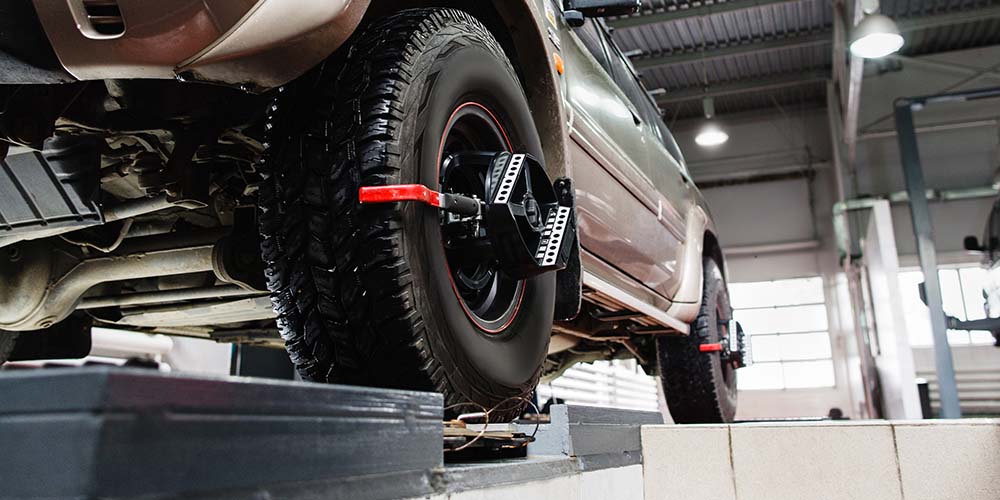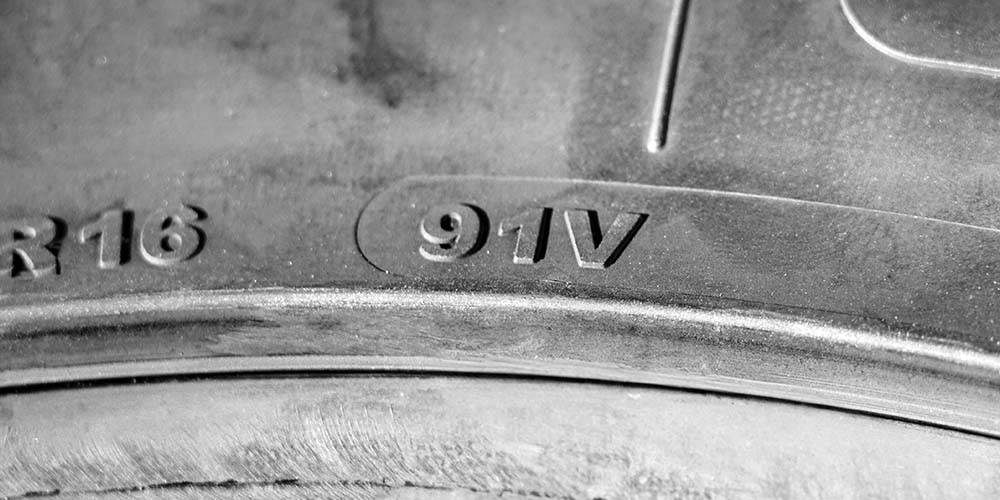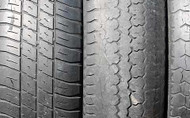How to Prevent Excessive Wear on Tires
Posted by Tina Alijevic on Aug 1st 2024
Tires are a crucial part of any vehicle, as they create the only contact between the car and the road. They provide the necessary grip, driving stability, and maneuvering. However, tires wear down over time, requiring replacement. But what happens when tires wear out too quickly? What is premature tire wear? Why does it happen and how can it be prevented?
Irregular and premature wear occur for several reasons, but by knowing those reasons, you can save your tires and money. Today, we will explain what causes such tread wear and how to prevent it to keep your tires and vehicle safe.
What Causes Tire Wear?
Tire wear is normal and it is caused by different physical or mechanical factors. Basically, the rubber wears away due to the friction between the tire and the road.
Tire wear can determine the life and performance of tires. There are different types of tire wear, which are caused by anything from improper inflation and misalignment to vehicle part problems. That’s why regular checkups are important: spot and fix uneven tire wear.
What Is Premature Tire Wear?
Premature wear formations are when the tire wears out faster than normal due to different factors. These are just some of the reasons for irregular tire wear:
- Incorrect tire pressure - Underinflation or overinflation can lead to uneven tread wear, as improperly inflated tires wear quickly on the center and shoulder areas.
- Road debris - Bad road conditions, such as curbs, potholes, and debris, provoke tire failure, shortening the tire's lifespan.
- Bad wheel alignment - Improper alignment causes the vehicle to pull to one side, putting more pressure on that side of the tire's tread and resulting in uneven tire wear.
- Aggressive driving - Poor driving habits, such as fast accelerations, harsh braking, or sharp turns, significantly shorten the tire's service life.

Keep reading and find out how to prevent excessive tire wear and ensure your tire safety.
How to Prevent Excessive Tire Wear?
Tires are an important part of the vehicle, but it's usually not the first thing drivers have in mind when they think about vehicle maintenance. However, they are the only part of the vehicle that is in contact with the road, so it is essential to take care of them to ensure a secure driving experience.
Excessive tread wear is one of the problems that shorten the tire's lifespan. But simple tire care helps extend service life while maintaining adequate traction and performance. Irregular tread wear can appear on the tire for numerous reasons, but it's important to notice and fix the problem as soon as possible.
Here are a few different things you can do to improve the tire's performance and prevent excessive wear.
Check Tire Pressure Frequently
Maintaining the correct tire pressure is essential for a longer service life. Actually, air pressure enables the tire's overall performance, improves gas mileage, and minimizes wear formations. Vehicle manufacturers define the tire inflation pressure not only to ensure a safer driving experience but also to protect the tire against excessive wear.
Underinflated tires wear quickly because they result in a bigger tread area of the footprint to be in contact with the road. This increases friction and causes the tire to wear faster, which also raises the temperature of the tire sidewalls. On the other hand, if the tire's center tread area wears faster than its edges, it means that the tire is overinflated.
Make sure you check your tire pressure regularly and inflate it to the manufacturer's recommendation. Tire air pressure recommendations can be found on the tire's sidewall and the vehicle's driver-side door sticker.
Wheel Alignment and Tire Balancing
The proper alignment of the wheels can prevent excessive tire wear. Alignment issues cause the vehicle to pull to one side during the drive, which puts more pressure on that side of the footprint.
Correct wheel alignment ensures that the driving pressure is evenly distributed across the tread area. It prevents irregular wear formations and reduces tire wear. Additionally, wheel alignment issues can also result in accidents and minimize the vehicle's overall controllability and maneuvering.
Tire balancing ensures even weight distribution on the wheels. Unbalanced wheels cause vibrations, excessive tire wear, damage, or other issues. Proper balancing offers a smoother ride, less wear and tear on the tires, better gas mileage, and a comfortable ride.

Rotate the Tires
The easiest way to lengthen the tire's life is to make sure it wears evenly and tire rotations will help. Tire rotation means that the tires are moved from one position to another on the vehicle. Ideally, they should be rotated every six months or 5,000 miles to maintain safe traction and minimize the risk of blowouts.
Inspecting whether the tread is directional or non-directional will reveal if it can be used on any wheel position or only for the left/right side of the vehicle. Normally, the rear tires are switched with the front ones, because the front tires are under more pressure and weight than the rear.
Adjust Driving Habits
Driving habits affect the tire's service life more than any other factor. Careless driving can easily cause uneven or accelerated tire wear. Eliminating it is safer for you, other drivers, and passengers. It is also less damaging to tires.
Aggressive acceleration, quick braking, and hard cornering increase the friction the tires are under. They put unnecessary pressure on them, and as a result, the tire will suffer excessive tread wear and potential tread damage. Slowing down and driving carefully will ensure great driving conditions.
At the same time, don't forget to look out for curbs, potholes, and debris on the road, which can cause accidental damage as well. Stick to the load and speed recommendations to avoid disproportionate load and speed pressure to reduce the amount of stress the tires are under.
Don’t Skip Tire Maintenance
The tire's health doesn't stop with regular inflation checks and tire rotations. Wheel alignment and suspension systems also play an important role. Tires and wheels are crucial for safe driving, but different vehicle parts need consistent checkups as well.
The car's suspension system is responsible for absorbing the shock that tires experience. When these car parts are worn, drivers can easily lose control of the vehicle. This can be very dangerous and will wear out the tires faster.
Routine checkups of various vehicle parts, such as the wheel alignment, shock absorbers, bearings, etc., will ensure the vehicle’s perfect performance.
Inspect the Tire Wear Regularly
Regularly checking tires for uneven wear and damage helps extend their life. When there is not enough tread left on the tire, it should be replaced. This inspection of the tires should be a usual part of your vehicle maintenance checklist.
Different tire wear patterns can develop on the tread area during the tire’s lifespan. If the wear is even, it will show that everything is in order, but when it is uneven, versatile problems might be at fault. Either way, it is important to recognize uneven tire wear on time.
For this reason, tire wear bars or tire wear indicators are useful. They visually represent the conditions in terms of wear. They are placed all around the tire’s footprint and measure the depth left on the tires.
The tire's footprint features optimized tread elements, such as tread blocks, sipes, and grooves, that keep continuous driving surface contact. When the tread life is close to its end, the tire will lose this, which reduces its needed traction.
Match the Load and Speed Durability
You can find a speed and load rating on the tire’s sidewall, which shows the maximum lbs. and mph of a tire. The load index presents how much weight a tire can safely carry, while the speed rating indicates the maximum speed a tire can easily handle.
Avoid excessive driving habits and pack more weight into the car than is recommended. With extra cargo placed in the vehicle, the risk of blowout increases. These factors can cause vehicle damage as well.
It is crucial to get tires with load and speed ratings that match your vehicle. As a result, they will ensure a secure driving experience and prevent damage to the tire.

Frequently Asked Questions
What Caused Premature Tire Wear?
There are a few things that can cause premature tire wear. Some of the main reasons are incorrect air pressure inflations, bad wheel alignments, aggressive driving habits, and different road conditions. Regular tire maintenance and careful driving help reduce the possibility of accelerated tread wear.
What Are Tire Wear Bars?
The tire wear bar, also known as the tire wear indicator, is a set of raised tread marks embedded in the tire's tread to indicate when the tire is worn out and needs replacement. They are placed in the grooves at 2/32", which is the legal tread depth of tires mounted on cars in most states.
What Causes Uneven Tire Wear?
Irregular tire wear can be the result of underinflated or overinflated tires, improper wheel alignment, and poor driving habits. They place excessive pressure unevenly on the tread area, which causes the problem. Proper tire maintenance and careful driving are essential to ensure the tire’s longer life.
















